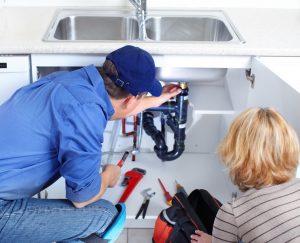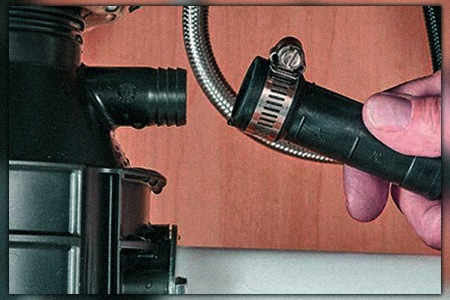Straightforward Instructions for Repairing a Leaky Waste Disposal
Straightforward Instructions for Repairing a Leaky Waste Disposal
Blog Article
How do you really feel when it comes to Why Is ?

Waste disposal unit are crucial kitchen devices that assist in throwing away food waste effectively. However, a dripping waste disposal unit can be an irritating and untidy problem to manage. Luckily, many leaks can be dealt with quickly with a couple of basic actions. In this article, we will review exactly how to deal with a leaking garbage disposal properly.
Introduction
Waste disposal unit are mounted under kitchen sinks and are developed to shred food waste into smaller sized items, allowing it to go through the pipes system quickly. While these gadgets are usually reliable, leaks can happen over time due to wear and tear, loose connections, or damage to the device.
Common Causes of Leaks in Garbage Disposals
Worn Seals and Gaskets
Seals and gaskets play an essential function in protecting against water from dripping out of the waste disposal unit. Gradually, these elements can weaken, leading to leakages around the disposal system.
Loose Connections
The connections in between the garbage disposal and the pipes system can end up being loose gradually, creating water to leakage out throughout procedure.
Cracks or Holes in the Disposal System
Physical damages to the garbage disposal, such as splits or openings in the housing, can likewise cause leakages.
Recognizing the Resource of the Leakage
Before attempting to repair a leaking waste disposal unit, it is vital to recognize the source of the leak. This can generally be done via aesthetic evaluation or by conducting straightforward examinations.
Visual Inspection
Evaluate the garbage disposal unit very carefully for any type of signs of water leakage. Pay attention to locations around seals, gaskets, and connection points.
Testing for Leakages
One method to test for leakages is by running water with the disposal unit and looking for any type of visible indicators of leakage.
Devices and Products Needed for Fixing a Dripping Waste Disposal Unit
Prior to beginning the repair work procedure, gather the required tools and products, consisting of a screwdriver, adjustable wrench, plumbing technician's putty, replacement seals or gaskets, and epoxy or patching material for fixing fractures or holes.
Step-by-Step Overview to Taking Care Of a Leaking Waste Disposal Unit
Shut off the Power
Before trying any type of repairs, make certain that the power to the garbage disposal device is shut off to prevent the danger of electric shock.
Find the Leak
Determine the specific place of the leakage and identify the reason.
Tighten up Connections
Utilize a wrench to tighten up any loose links between the disposal system and the pipes system.
Change Seals or Gaskets
If the leak is because of used seals or gaskets, get rid of the old components and replace them with brand-new ones.
Patching Splits or Openings
For cracks or holes in the disposal system, usage epoxy or an ideal patching product to secure the broken area.
Testing the Garbage Disposal After Repair Work
When the repair service is total, check the waste disposal unit by running water with it to make sure that the leakage has actually been dealt with.
Preventive Upkeep Tips to Stay Clear Of Future Leakages
To stop future leaks, it is vital to execute normal maintenance on your waste disposal unit. This consists of maintaining it tidy, preventing putting non-food items or tough items down the disposal, and regularly checking for leakages or other issues.
Verdict
To conclude, repairing a dripping garbage disposal is a relatively simple process that can be finished with basic devices and materials. By complying with the actions described in this write-up and practicing preventative maintenance, you can keep your waste disposal unit in good working condition and prevent expensive repairs in the future.
HERE’S HOW TO FIX YOUR GARBAGE DISPOSAL
WHAT TO DO IF SOMETHING IS STUCK IN YOUR GARBAGE DISPOSAL
If the impeller won’t turn, there’s probably something stuck in the disposal. It could be a steak bone or peach pit, although plumbers report pulling all sorts of inappropriate objects out of disposals, such as bottle caps or aluminum foil. Make sure power to the disposal is off, and look inside to see if you can see the source of the jam.
Never stick your fingers in a disposal. Pull out anything you see with tongs or pliers.
If the disposal still won’t work, it may be time to call a plumber or consider buying a new disposal. GEM Plumbing & Heating is here for all of your garbage disposal needs.
WHAT TO DO IF YOUR GARBAGE DISPOSAL DRAIN IS CLOGGED
Take everything out from underneath your sink and put a bucket or other container under your disposal to catch any water that drains out. Disconnect your disposal from the power supply. If it’s plugged into a wall outlet, unplug it. If it’s hardwired into an electrical box, go to the electrical panel and turn off the breaker for the disposal. Pour ¼ cup of baking soda into the drain, followed by ½ cup of white vinegar. Give the solution a few minutes to fizz and do its work. Look into the disposal with a flashlight to see if you can see an object that might be causing the clog. If you see it, remove it using tongs or pliers. MORE TIPS ON DEALING WITH A CLOGGED GARBAGE DISPOSAL
Never use drain cleaner in a garbage disposal. It can damage the plastic parts inside the disposal. You can also be splashed with the caustic liquid while working to clear the clog. Beware! Never stick your fingers into a garbage disposal. Trust us — not a good idea. In many instances, your dishwasher drains through your garbage disposal. This allows the disposal to grind any large food particles that may be drained out of your dishwasher. There are some jurisdictions, however, where the plumbing code prohibits such a connection. WHAT TO DO WHEN YOUR DISHWASHER DRAINS THROUGH THE DISPOSAL
Run some water in the sink so your plunger has at least a ½-inch of water to create a seal and plunge vigorously up and down several times. You may need to repeat this several times. Run hot water down the drain to clear any residue that remains.

I'm just very involved in Why Is and I'm hoping you enjoyed the blog posting. Enjoyed our write up? Please share it. Help others find it. Thanks for your time. Kindly check up our blog back soon.
Click Here Report this page